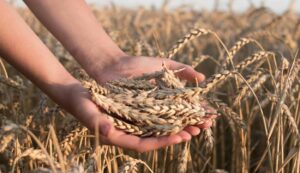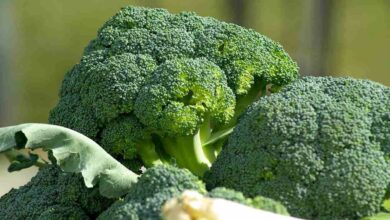Wheat Crop: These small negligences are causing damage to the wheat crop, know the prevention
Wheat Crop: When the wheat harvest is ripe each year, the farmer’s joy has no limits. It seems like the effort has paid off when one sees the sea of golden ears in the fields. However, all of the effort might be in vain if there is even a little amount of negligence at this time. Harvesting wheat is both delicate and crucial. The crop may deteriorate, the grains may fall, or the field may be completely ruined if the improper timing and technique are used.

Thus, we will learn today in plain and clear terms what is vital to remember while harvesting wheat. Anyone involved in farming or interested in learning something new may benefit from this material, not only farmers.
Selecting the appropriate moment
Harvesting wheat should only be done when the grains are completely mature. Many people harvest too rapidly, which might cause the grains to decay quickly if there is any moisture remaining in them. However, if it is postponed too long, the grains begin to fall because of birds and wind. As a result, the yield is decreased. When the grains begin to shine and the wheat ears begin to bend slightly, it is time to harvest.
The harvest is lost if the weather is unfavourable
Just before harvesting, it is crucial to get meteorological information. The crop will get damp and may grow mould if it rains. As a result, the wheat’s quality may decline and the grains may become black. Once-spoilt wheat does not sell well at the market or remain fresh for a long period at home. Therefore, it is advisable to check the weather before harvesting and to wait a bit if clouds are visible in the sky.
Proper harvesting equipment is essential to prevent grain spoilage
These days, harvesting is also carried out in the fields using harvester equipment. The grains may shatter or fall out of the ears if the machine operates too quickly or if the blade height is wrong. Simultaneously, farmers who harvest by hand must take care to avoid uprooting the crop from its roots with a sickle. Both the crop and the soil are ruined by this.
Take caution while threshing to avoid wasting the grains
When the crop is harvested, it is placed in a thresher machine to separate the grains. Right now, the machine’s speed is crucial. The grains may shatter if the mill runs too quickly, while improper work may result from a sluggish machine. Additionally, it is improper to leave the grains out in the open after threshing since the moisture and dust may soon cause them to deteriorate. It is essential to keep them dry and protected.
Everything can catch fire with a spark therefore, use extreme caution around fire
The fields are dry and the straw is all over the place after wheat is harvested. The whole field may burn in such a scenario if a spark escapes from the machine or if someone is smoking a cigarette or bidi. Every year, fire incidents happen, and the losses might amount to crores. As a result, exercising care is crucial.
Proper storage is essential to prevent crop damage
After the wheat is harvested and threshed, it is equally crucial to store it appropriately. The wheat may decay or get plagued with insects if it is not totally dry. As a result, store it in dry bags or tanks in a clean environment. Additionally, periodically inspect it to make sure there is no damage.





